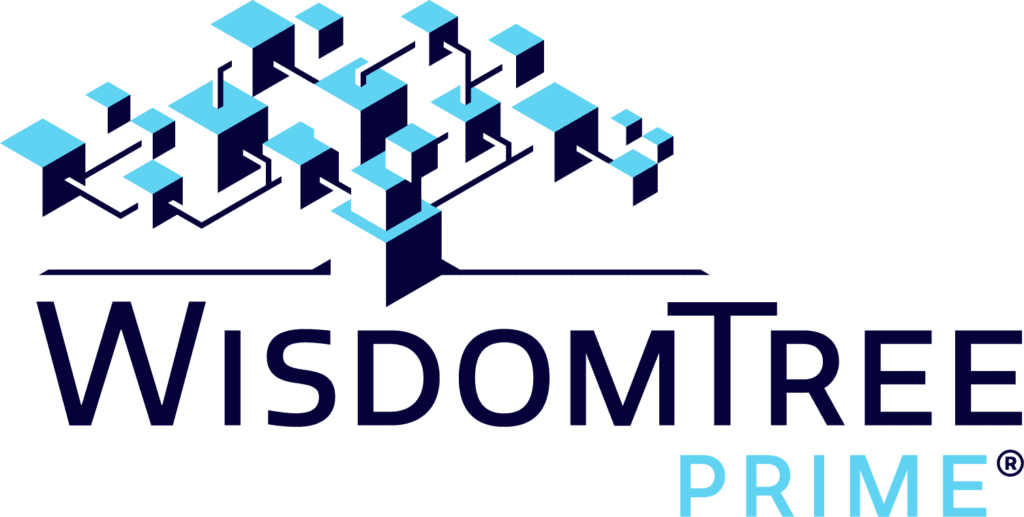Key Takeaways
- Importance of Fraud Proofs: Fraud proofs are essential for ensuring the security and accuracy of transactions on Layer 2 blockchains, which is crucial for maintaining trust in tokenized real world assets.
- Centralization Risks: Without fraud proofs, Layer 2 solutions can become centralized, increasing the risk of hacks and manipulation, particularly if the sequencer’s multi-sig wallet is compromised.
- Enhanced Scalability: Layer 2 solutions improve transaction speed and reduce costs, but they must balance these benefits with the need for decentralization and security.
- Future of Real World Asset Tokenization: Implementing fraud proofs and managing centralization risks will be vital as more asset managers look to tokenize assets and potentially deploy their own Layer 2 networks for better control and financial benefits.
What is a Fraud Proof?
First things first, a fraud proof is a mechanism used in blockchain technology to ensure the integrity and validity of transactions. Specifically, it serves as a safeguard against malicious activities by verifying that the data within the blockchain has not been tampered with. Fraud proofs are essential for maintaining trust and security, particularly in Layer 2 blockchains, which are designed to improve the scalability and efficiency of the base blockchain layer (Layer 1).
The Byzantine General’s problem1 has plagued blockchains since their inception, making scalability and security paramount for its adoption and functionality. Asset tokenization involves converting rights to an asset into a digital token on a blockchain, encompassing real estate, artwork, shares of stock, and commodities like Bitcoin or Gold. However, the digital nature of these tokens and the complexity of managing them on a blockchain can introduce vulnerabilities and opportunities for fraud and loss of funds. In this context, fraud proofs, particularly as they apply to Layer 2 blockchains, are crucial for safeguarding tokenized asset transactions and maintaining trust among market participants.
How exactly do Layer 2’s work?
In a typical process, user transactions on a Layer 2 network are included in blocks, which are then grouped into batches. These batches are organized into sequences that are periodically submitted to the Ethereum (or another L1) mainnet for final settlement. A critical aspect of this process is the role of the sequencer or block proposer, who aggregates and submits these sequences. Without robust verification mechanisms like fraud proofs, the entity controlling the sequencer holds considerable power and could potentially alter transaction data before it reaches the main chain. Moreover, if the private keys of the wallet controlling the sequencer are compromised, or if the sequencer is hacked, the attacker could manipulate transactions, leading to significant disruption and potential loss of funds on the Layer 2 network. Fraud Proofs allow users to detect and challenge any incorrect or fraudulent transactions submitted by the sequencer. By proving the existence of fraud, users can ensure that only accurate and legitimate data is ultimately recorded on the L1, thus preserving the integrity and trustworthiness of the L2 despite potential compromises in the sequencer’s security.
To put this all in perspective, here’s an analogy to help simplify the role of each component of Layer 2 systems:
Imagine Layer 2 solutions on Ethereum as vibrant metropolis like Gotham where numerous transactions (like daily activities) are constantly taking place. In this city, there is a central authority (the sequencer) that gathers and organizes these activities/transactions into reports (batches and sequences) to send to the central government (Ethereum/L1 mainnet) for official and permanent record-keeping.
Fraud proofs act like a vigilant and independent oversight committee, akin to the Supreme Court, ensuring that the reports submitted by the city’s central authority are accurate and legitimate. Even if the central authority (sequencer) is compromised or corrupted, the oversight committee (fraud proofs) has the power to review and challenge any fraudulent or incorrect information before it becomes a part of the official government records (mainnet).
Just as the Supreme Court can overrule and correct unjust laws, fraud proofs can invalidate fraudulent transactions, ensuring that only truthful and accurate data is recorded on the Ethereum mainnet.This safeguard maintains the integrity of the system, even if the central authority faces security issues.

Source: https://x.com/jarrodWattsDev/status/1796456174780600635?t=VLgX6fX3P_a3-Ud58nLbug&s=192
How do Fraud Proofs Work?
According to L2Beat3, there are currently over 100 Layer 2 solutions either active or in development, with only a handful employing active fraud proofs. Without fraud proofs, users place a high degree of trust in the centralized entity controlling the multi-sig wallet that operates the Layer 2.
Fraud proofs are a critical mechanism in ensuring the integrity and trustworthiness of layer 2’s. Here’s a detailed outline of they operate. For this, I’m going to use an analogy of students in a classroom to help illustrate the ideas and processes:
- Off-chain Transaction Processing:
- Transactions are processed off the main blockchain (Layer 1), which allows for higher throughput and significantly lower transaction fees. This is especially important for asset tokenization, where a high volume of transactions might be involved. Think of these transactions as students taking final exams. These exams (transactions) are conducted in various rooms across campus (off-chain), rather than having all students sitting in a single hall (Layer 1).
- Transactions are processed off the main blockchain (Layer 1), which allows for higher throughput and significantly lower transaction fees. This is especially important for asset tokenization, where a high volume of transactions might be involved. Think of these transactions as students taking final exams. These exams (transactions) are conducted in various rooms across campus (off-chain), rather than having all students sitting in a single hall (Layer 1).
- State Commitment:
- The results of these transactions are committed to the main blockchain as a summarized state or transaction batch (see graphic above showing the hierarchical structure of transactions, blocks, batches, and sequences). After the exams, all the scores are collected and summarized into a single grade sheet that is posted on a bulletin board (main Layer1 blockchain).
- The results of these transactions are committed to the main blockchain as a summarized state or transaction batch (see graphic above showing the hierarchical structure of transactions, blocks, batches, and sequences). After the exams, all the scores are collected and summarized into a single grade sheet that is posted on a bulletin board (main Layer1 blockchain).
- Challenge Window:
- After the state commitment, there’s a predefined period during which participants can challenge the validity of the committed state by submitting a fraud proof. Once the grade sheet is posted, students have a week (or however long as outlined by the Layer 2 Challenge window) to review their grades and raise any concerns if they believe there has been a mistake. This period allows for the verification of the posted grades, ensuring any mistakes can be corrected before the grades are finalized for the end of the semester.
- After the state commitment, there’s a predefined period during which participants can challenge the validity of the committed state by submitting a fraud proof. Once the grade sheet is posted, students have a week (or however long as outlined by the Layer 2 Challenge window) to review their grades and raise any concerns if they believe there has been a mistake. This period allows for the verification of the posted grades, ensuring any mistakes can be corrected before the grades are finalized for the end of the semester.
- Verification:
- If a challenge is raised, the disputed transaction is re-executed on the main blockchain using the original data and rules. This ensures any incorrect or fraudulent state changes can be identified and corrected. If a student challenges their grade, the professor will re-check the student’s exam (re-execute the transaction). The professor will go throguh the original answers and the grading rubric (original data and rules) to verify whether the grade was calculated correctly. If an error is found, the grade will be corrected.
- If a challenge is raised, the disputed transaction is re-executed on the main blockchain using the original data and rules. This ensures any incorrect or fraudulent state changes can be identified and corrected. If a student challenges their grade, the professor will re-check the student’s exam (re-execute the transaction). The professor will go throguh the original answers and the grading rubric (original data and rules) to verify whether the grade was calculated correctly. If an error is found, the grade will be corrected.
- Finality:
- After the professor reviews the challenged grade:
- If the Fraud Proof is Upheld:
If the professor finds that there was indeed a mistake in the grading, they will correct the student’s grade (reverse the erroneous transaction) and may take steps to ensure such errors do not happen again (penalties). - If the Fraud Proof is Not Validated:
If the professor finds that the original grade was correct, the grade is confirmed as legitimate and remains unchanged (transaction is finalized).
- If the Fraud Proof is Upheld:
- After the professor reviews the challenged grade:
The Importance of Fraud Proofs in Asset Tokenization
As outlined above, fraud proofs provide a robust mechanism to ensure that transactions processed off-chain are accurate and trustworthy when they are committed to the main blockchain. Now, what does this all mean for tokenizing assets on a Layer 2 blockchain?
Tokenizing assets involves representing physical or intangible assets as blockchain tokens, making them easier to trade and divide. However, this digital representation must be meticulously accurate and secure to maintain the asset’s value and ownership integrity.
Here’s how fraud proofs ensure the integrity of these tokenized assets:
- Ensuring Transaction Integrity:
Fraud proofs ensure that each transaction reflecting a change in asset ownership or rights is accurately recorded, vital for maintaining the integrity and trust in the digital representation of assets.
- Enhancing Security:
By enabling challenges to off-chain transactions, fraud proofs add a security layer, deterring fraudulent activities by creating an environment where any malicious attempts can be detected and rectified.
- Building Trust:
For asset tokenization to be widely accepted, there must be unequivocal trust in how transactions are processed and recorded. Fraud proofs make the blockchain environment more robust and trustworthy.
- Regulatory Compliance:
Asset tokenization often falls under regulatory scrutiny. Fraud proofs can align blockchain processes with legal and compliance requirements by ensuring that all transactions are verifiable and reversible in case of discrepancies.
- Facilitating Scalability:
Fraud proofs allow the blockchain to scale more effectively by processing transactions off-chain and using the blockchain for verification when necessary. This is essential for asset tokenization, where the volume of transactions can be immense.
Summarizing Centralization in Layer 2 Solutions
When it comes to tokenizing billions of dollars worth of value on Layer 2 blockchains, it’s vitally important to consider centralization. What would happen if an L2 that doesn’t have fraud proofs deployed is hacked and the multi-sig controlling the sequencer is compromised? While these layers enhance transaction speed and reduce costs, they vary in their degree of centralization, which can potentially increase risk. With each layer of abstraction away from the main blockchain, L2s often sacrifice decentralization and, consequently, security. Some operate with significant centralization, which can reduce costs and improve accessibility but might lead to fragmented liquidity and security concerns. Understanding this balance is crucial for asset managers considering whether to tokenize assets on layer 2 solutions, or to implement their own Layer 2 solutions.
The Future of Tokenizing Assets on Layer 2’s
Looking ahead, there’s a potential future where asset managers who tokenize assets might spin up their own Layer 2 networks. If hobbyists can deploy a Layer 2 in a couple of hours on a Saturday morningi4, then asset managers can do the same. This would allow businesses to control data and centralization—effectively managing a distributed database—but also potentially benefit financially. For instance, Layer 2 platforms like Coinbase’s Base have generated substantial revenue ($7m last month; see below), illustrating the financial viability of operating a Layer 2 blockchain. By controlling their own Layer 2 networks, asset managers could ensure greater security, tailor solutions to their specific needs, and capture a significant portion of the value chain, from transaction fees to data management.


Source: https://dune.com/niftytable/rollup-economics5
As blockchain technology evolves, the mechanisms like fraud proofs that support its scalability and security will become increasingly important. When it comes to tokenizing assets, and bringing traditional assets on-chain, fraud proofs provide a crucial foundation for ensuring that digital representations of assets remain secure, accurate, and trustworthy. For stakeholders in blockchain, understanding and implementing such technologies is key to unlocking the full potential of asset tokenization and the broader adoption of blockchain technology.
Sources:
1 https://bitcoinmagazine.com/glossary/what-is-the-byzantine-generals-problem
2https://x.com/jarrodWattsDev/status/1796456174780600635?t=VLgX6fX3P_a3-Ud58nLbug&s=19
3https://l2beat.com/scaling/summary
4 https://tokenminds.co/blog/blockchain-development/layer-2-blockchain
5 https://dune.com/niftytable/rollup-economics







